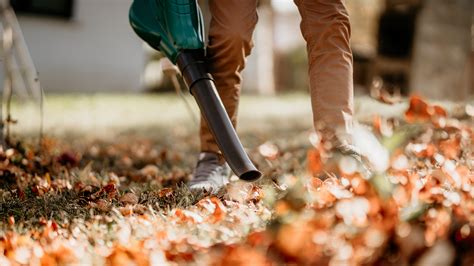How to Blow Leaves Where You Want Them: Mastering Leaf-Blowing Techniques
Fall is beautiful, but those falling leaves can quickly turn a picturesque scene into a frustrating chore. Knowing how to blow leaves effectively, and where you want them, can save you significant time and effort. This guide will walk you through mastering the art of leaf blowing, transforming yard work from a dreaded task into a manageable process.
Understanding Your Equipment
Before we dive into techniques, let's talk about your tools. The type of blower you use significantly impacts your ability to control leaf movement.
Types of Leaf Blowers:
- Handheld Blowers: These are great for smaller yards or quick cleanups. They offer excellent maneuverability but may tire your arms during longer sessions.
- Backpack Blowers: These are ideal for larger properties. The weight is distributed on your back, reducing fatigue and allowing for more powerful blowing capabilities.
- Electric vs. Gas: Electric blowers are quieter and generally cleaner, but they’re limited by cord length. Gas blowers provide greater power and runtime but are noisier and require gas and oil.
Mastering Leaf-Blowing Techniques
Regardless of your blower type, mastering these techniques will help you direct leaves precisely:
1. Strategic Pile Creation:
The Goal: Don't just blow leaves around aimlessly. Instead, strategically create piles in designated areas.
- Start at the Perimeter: Begin by blowing leaves from the outer edges of your yard toward the center.
- Use the "Sweep" Method: Don't just point the blower directly at the leaves. Instead, use a sweeping motion, guiding the leaves in your desired direction.
- Control Your Speed: A slower, more controlled speed allows for greater precision.
2. Utilizing Wind and Terrain:
Leveraging Nature: Use the natural elements to your advantage.
- Wind Direction: Pay attention to the wind direction. Blowing with the wind will make moving leaves much easier.
- Slope Considerations: On slopes, blow leaves uphill first, then downhill to consolidate piles.
3. Choosing the Right Nozzle:
Many blowers offer adjustable nozzles. Experiment to find what works best for you. A narrower nozzle allows for more precise control, while a wider nozzle covers more ground quickly.
4. Dealing with Difficult Areas:
Tackling Tough Spots: Some areas require extra attention.
- Under Shrubs & Bushes: Use a narrower nozzle setting and carefully maneuver the blower to dislodge leaves without damaging plants.
- Gutter Cleaning: Use a low-power setting to gently clear gutters of leaves, avoiding damage to the gutters themselves.
Optimizing Your Workflow
1. Plan Your Attack:
Visualize the leaf-clearing process before you start. Identify areas where you want to pile the leaves and mentally map your approach.
2. Work in Sections:
Break down your yard into manageable sections. This prevents feeling overwhelmed and allows for a more efficient and organized process.
3. Regular Maintenance:
Regularly clearing leaves prevents massive piles from building up, making the job much easier in the long run.
Beyond the Blower:
For extra efficiency, consider using a rake to gather leaves into smaller piles before using the blower to move them to their final destination. This technique minimizes the amount of blowing required, saving you time and effort.
By following these tips, you'll master the art of leaf blowing, directing those autumn leaves exactly where you want them, leaving your yard neat, tidy, and ready for winter.
